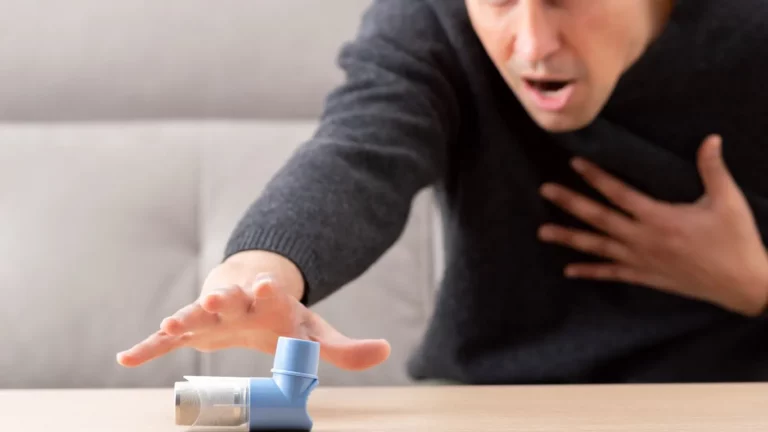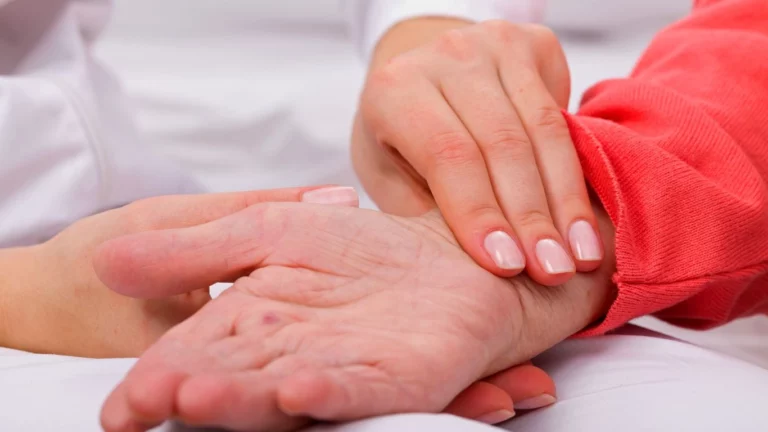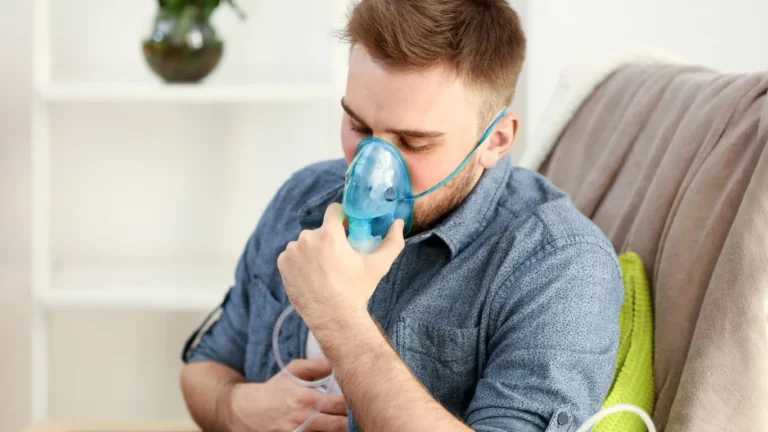GERD and Difficulty Swallowing: Hidden Triggers You Must Avoid
If you’ve ever experienced that stubborn feeling like something’s stuck in your throat—especially after a meal—you’re not alone. As someone who’s spent years working as a Medical Assistant in a busy Gastroenterology clinic, I can tell you this comes up more often than most people think. GERD and difficulty swallowing go hand in hand more than folks realize. We had patients walk in every week saying, “It feels like food is caught right here,” pointing somewhere between their chest and neck. And often, they were dealing with the silent yet aggravating effects of gastroesophageal reflux disease—better known as GERD.
What Is GERD, Really?

Let’s break it down simply. GERD, short for gastroesophageal reflux disease, is when stomach acid keeps sneaking up into the esophagus—the tube that connects your mouth to your stomach. It’s like your stomach saying, “Hey, I’m not done with this food,” and trying to send it back up for a second round. But that backflow brings acid with it, and that’s where the problems begin.
Now, acid is great in your stomach—it helps break down food—but it’s not meant for your esophagus. Over time, repeated exposure to acid can cause irritation, swelling, and even narrowing of the esophagus. And guess what one of the most common symptoms becomes? You got it: difficulty swallowing, also called dysphagia.
How GERD Leads to Difficulty Swallowing

When patients used to tell me, “It feels like food won’t go down,” they weren’t imagining things. The body’s natural response to acid irritation is inflammation—and when your esophagus is inflamed, it can literally tighten. Over time, scar tissue can form, making the tube narrower. That’s when swallowing even soft foods or liquids starts to feel like a challenge.
The Role of Esophageal Strictures
One thing I learned from shadowing our GI specialists is that esophageal strictures are a common result of untreated or chronic GERD. These are narrowings in the esophagus caused by scar tissue. A lot of our patients didn’t even realize this could happen until they were sitting in our office with a barium swallow test scheduled.
Sometimes we’d hear stories like, “I thought I was just eating too fast,” or “I blamed it on stress.” But the reality is, if you’re regularly having trouble swallowing and you’ve had heartburn or acid reflux for a while, your body might be telling you something’s up.
Other Reasons GERD Messes With Swallowing
It’s not just strictures, though. There are other ways GERD contributes to swallowing problems:
- Inflammation of the esophagus (esophagitis) – This makes the lining of your esophagus raw and sore, which can cause pain during swallowing.
- Spasms – The muscles in the esophagus can become jumpy and spasm in response to irritation. That can feel like choking or tightening.
- Laryngopharyngeal reflux (LPR) – Sometimes the acid climbs even higher, reaching the throat or voice box. That can cause chronic throat clearing and the sensation of a lump.
I remember one patient who came in thinking she had a chronic sore throat. No digestive complaints at all. After a few questions, it turned out she was sipping coffee all day, skipping meals, and sleeping flat at night. Classic LPR triggers! A few lifestyle tweaks and a mild PPI prescription later, and her swallowing issues improved dramatically.
Common Symptoms of GERD and Difficulty Swallowing

So, how do you know if your trouble swallowing is related to GERD? Here’s what we usually looked for in patients:
- Frequent heartburn or acid reflux – That burning feeling in the chest after meals or when lying down.
- Regurgitation – The sour or bitter taste of food or acid coming back up.
- Chronic sore throat or hoarseness – Especially in the mornings.
- Feeling like food is stuck – Especially with bread, rice, or meat.
- Unexpected weight loss – Because people start avoiding eating due to discomfort.
From my personal experience, it wasn’t just older folks dealing with this. We saw people in their 20s and 30s, especially those with high-stress jobs, poor sleep habits, or who were eating on the go. GERD doesn’t discriminate.
Is It Time to See a GI Specialist?
If you’re reading this and thinking, “Wow, this sounds like me,” it might be worth getting checked out. Sure, occasional reflux is normal—especially after a spicy taco night—but if it’s happening more than twice a week or interfering with how you eat, sleep, or talk, then it’s time to consider seeing a GI doc.
As someone who’s worked closely with these specialists, I can tell you they’ve seen it all. Whether it’s a quick endoscopy or trying a course of medication, they have tools to help you figure out what’s going on and how to fix it. Trust me, swallowing shouldn’t be a struggle.
Tests and Procedures to Diagnose GERD and Swallowing Issues

When someone walked into our clinic complaining about food “getting stuck” or throat tightness, our providers didn’t just guess. Diagnosing GERD and difficulty swallowing usually requires a little detective work—and yes, sometimes a scope or two. I’ve held a lot of hands through these tests, and trust me, most of them aren’t as scary as they sound.
Upper Endoscopy (EGD)
This was the most common one we scheduled. An upper endoscopy lets the GI doc take a peek down your esophagus using a thin, flexible tube with a camera at the end. We called it the “esophagus selfie stick” jokingly (with patients who appreciated a little humor). It’s a quick outpatient procedure, and most patients don’t remember a thing because of the sedation. This test helps spot:
- Esophagitis (inflammation)
- Strictures (narrowing from scar tissue)
- Barrett’s Esophagus (a possible precancerous condition)
Sometimes, our docs would also take a tiny tissue sample—a biopsy—just to rule out anything more serious.
Barium Swallow Study
Another test we often arranged, especially for those with more structural symptoms, was a barium swallow. It sounds weird, but it’s really just drinking a chalky liquid and getting X-rays taken. The barium lights up your esophagus so radiologists can see how smoothly (or not) things are moving down.
I remember one patient telling me afterward, “That barium stuff tasted like liquid sidewalk,” which made us both laugh. But he was grateful, because that test revealed a significant narrowing in his lower esophagus—and he finally had an answer to why he was struggling to swallow steak.
Esophageal Manometry
Okay, this one doesn’t win any popularity contests. Manometry measures how well the muscles in your esophagus are working by inserting a small tube through the nose down into the stomach. Patients sometimes called it the “nose noodle.” It’s a little uncomfortable, but it’s crucial for checking if the muscles that move food are weak, too tight, or spazzing out completely.
What Treatment Actually Looks Like (From the Inside)

Once we knew what was causing the swallowing trouble, treatment plans could finally begin. And let me tell you, treatment for GERD and difficulty swallowing isn’t always a one-size-fits-all situation. I saw everything from medication-only regimens to folks who needed procedures—and plenty who just had to change how they lived day to day.
Medications That Actually Work
Most patients started with PPIs—proton pump inhibitors. These reduce the amount of acid your stomach makes. Think of them as giving your esophagus a break from the chemical burn. Common ones included:
- Omeprazole (Prilosec)
- Esomeprazole (Nexium)
- Pantoprazole (Protonix)
I always made sure to remind patients to take these 30-60 minutes before breakfast for best results. Timing matters! And when folks didn’t see enough improvement, docs sometimes added H2 blockers like famotidine at bedtime.
When Dilation Is Needed
For strictures that were causing major swallowing issues, the GI doc would often do an esophageal dilation—basically stretching out the narrowed part of the esophagus using a balloon or dilator. It’s done during an endoscopy, and honestly, the results can be life-changing. I remember one woman came back in tears because it was the first time in months she could eat pasta without pain.
Surgery for Severe GERD?
In extreme cases, especially for people not responding to meds, the doctor might talk about fundoplication surgery. It involves wrapping part of the stomach around the bottom of the esophagus to strengthen that weak lower valve. We didn’t see this every day, but when it was needed, it often gave great long-term relief.
Real-Life Lifestyle Fixes That Make a Difference

This is where I always felt most helpful as a Medical Assistant—coaching patients on the little things that add up. No one likes being told to overhaul their life, but when I shared tips based on real results from other patients, people listened. These aren’t just check-the-box tips—they actually help:
- Elevate the head of your bed – We told folks to slide a wedge under the mattress or use blocks. Lying flat lets acid sneak back up while you sleep.
- Avoid big meals before bed – Give your stomach 2-3 hours to empty before you lie down. Trust me, late-night pizza is a reflux bomb.
- Cut trigger foods – Everyone’s different, but common troublemakers included tomato sauce, coffee, chocolate, spicy dishes, and fried stuff.
- Lose weight if needed – Extra belly fat puts pressure on your stomach and makes reflux worse. Just 10-15 pounds can make a difference.
- Chew slowly and thoroughly – This helps prevent food from feeling like it gets stuck and gives your digestive system a head start.
We used to say, “Eat like your grandma taught you—small bites, sit upright, and no rushing.” It’s old-school advice, but wow, does it work.
And I can’t count the number of patients who improved just by tweaking when and how they ate. One truck driver told me, “I switched from two mega meals to four smaller ones and haven’t had heartburn in weeks.” Real stories like that stick with me.
When Symptoms Don’t Improve
Here’s the thing—not everyone responds to the first round of treatment. And that’s okay. If symptoms persist, the next step might involve more testing, medication adjustments, or even referrals to ENT or speech therapists for swallowing assessments.
GERD and swallowing problems can be stubborn. But with the right support, the right tools, and a little patience, things usually get better. And no one should just “live with it”—especially when your throat feels like it’s working against you.
Emotional and Mental Toll of GERD and Swallowing Problems

Something that doesn’t get talked about enough—especially in medical brochures—is how GERD and difficulty swallowing can mess with your mental health. I had so many patients break down in our office, not because of pain, but because of the fear that came with eating. Fear of choking. Fear of triggering reflux. Fear that something more serious was going on.
One woman told me she started avoiding dinners with friends because she was afraid she’d cough or gag in front of them. Another man switched to smoothies and protein shakes exclusively—not because he loved them, but because chewing and swallowing solid food gave him anxiety. That stuff sticks with you. And it’s not “in your head.” It’s real.
It’s Okay to Ask for Support
If you’re going through this, let me just say—you’re not alone. Talk to your doctor about the emotional side of it. We had a few patients benefit tremendously from short-term counseling, support groups, or mindfulness practices. Some even found it helpful to work with a registered dietitian to rebuild trust with food, one bite at a time.
And honestly, just hearing that what you’re going through is common and manageable can be a huge relief. Because it is.
Foods to Focus On (and Avoid)

As a Medical Assistant, I wasn’t a dietitian, but you better believe I learned a ton about food habits from our patients. And when you deal with GERD and swallowing issues, what you eat and how you eat makes a huge difference.
Foods That Tend to Be Easier on the Esophagus:
- Oatmeal, cream of wheat, and soft cereals
- Steamed or roasted veggies like carrots, zucchini, and green beans
- Lean proteins (baked fish, turkey, soft tofu)
- Ripe bananas, melons, and cooked apples
- Rice, couscous, mashed potatoes
- Non-acidic broths and soups
A lot of our patients found success eating more frequently in smaller portions. One even joked, “I’m basically snacking like a toddler—but hey, it works!”
Trigger Foods to Limit or Avoid:
- Tomato-based anything (pasta sauce, ketchup, chili)
- Citrus fruits (oranges, grapefruit, lemons)
- Fried or greasy foods
- Mint, chocolate, and caffeine (sorry, coffee lovers—I feel your pain)
- Carbonated drinks and alcohol
- Spicy dishes, especially those with peppers or garlic-heavy sauces
Again, triggers can vary, so it’s about learning what your body reacts to. We used to suggest keeping a simple food and symptom journal. It sounds old-school, but it worked wonders for patterns that weren’t obvious right away.
Long-Term Management and Prevention
Here’s the good news: once you get a handle on GERD and its effects on swallowing, you can stay ahead of flare-ups. The goal is long-term management—not just symptom relief, but actually helping your esophagus heal and keeping things smooth (literally).
- Stick to your med schedule – Missing doses can undo progress quickly.
- Don’t lie down right after eating – Give your body 2-3 hours before reclining.
- Wear loose-fitting clothing – Especially around the waist to reduce pressure.
- Stay hydrated – But sip water throughout the day, not all at once with meals.
- Routine follow-ups – Don’t skip those check-ins, especially if you’re prone to strictures.
I remember one patient who had three esophageal dilations over two years. The turning point was when she got serious about her reflux plan—meds, lifestyle, food, the whole deal. She hasn’t needed a scope since. It just takes a bit of consistency.
Final Thoughts from the Clinic Room
Working in GI, I saw firsthand how GERD could quietly creep into people’s lives and make something as simple as swallowing a bite of food a daily struggle. It wasn’t always dramatic, but it wore people down. The burning, the coughing, the “stuck” feeling, the fear of mealtimes—it adds up. But I also saw just how resilient people are.
With the right guidance, patience, and a little trial and error, so many folks reclaimed their comfort and confidence. If you’re dealing with GERD and difficulty swallowing, know this: you deserve answers, support, and a care plan that works for your life.
References
Disclaimer
This article is based on my personal experience as a Medical Assistant in a Gastroenterology clinic and is intended for informational purposes only. It does not replace professional medical advice, diagnosis, or treatment. Always consult with a licensed healthcare provider regarding any symptoms or conditions you may have.

Camellia Wulansari is a dedicated Medical Assistant at a local clinic and a passionate health writer at Healthusias.com. With years of hands-on experience in patient care and a deep interest in preventive medicine, she bridges the gap between clinical knowledge and accessible health information. Camellia specializes in writing about digestive health, chronic conditions like GERD and hypertension, respiratory issues, and autoimmune diseases, aiming to empower readers with practical, easy-to-understand insights. When she’s not assisting patients or writing, you’ll find her enjoying quiet mornings with coffee and a medical journal in hand—or jamming to her favorite metal band, Lamb of God.






